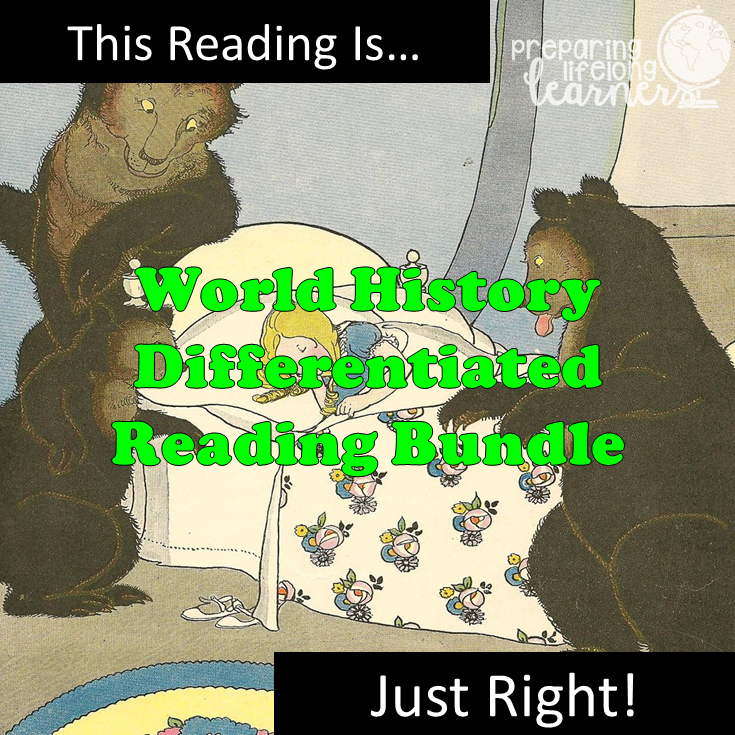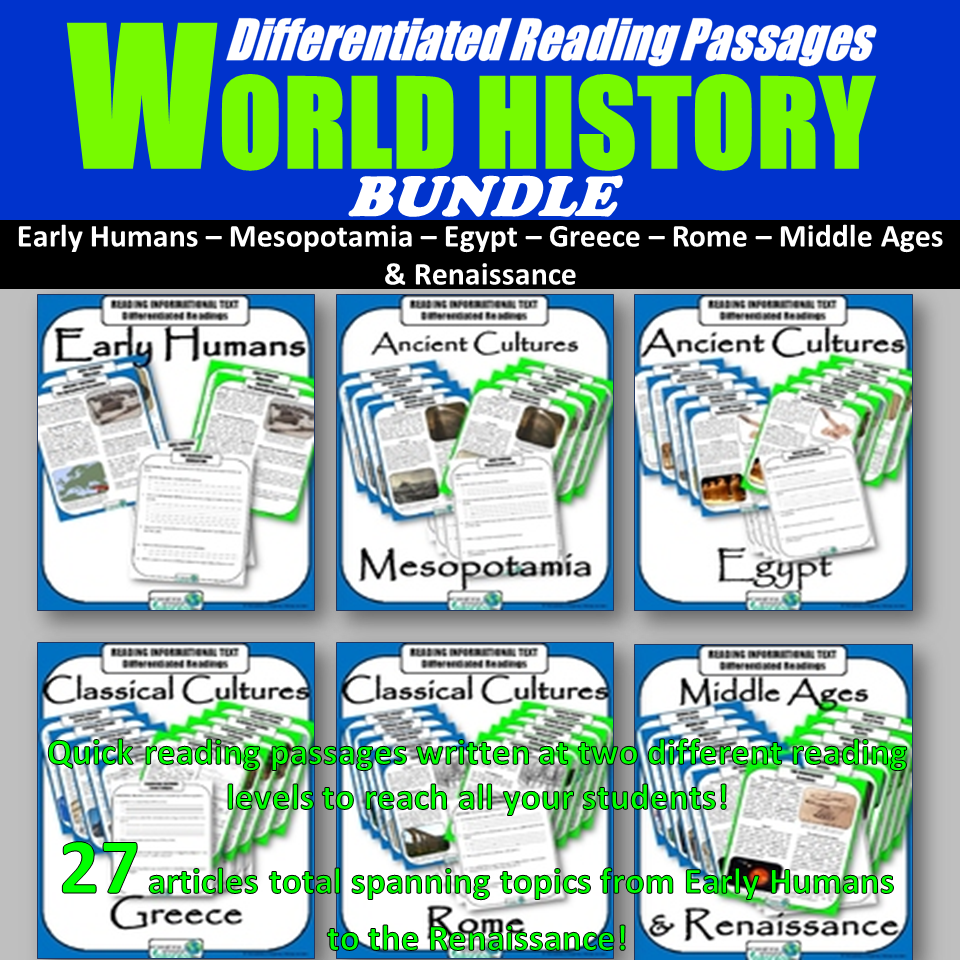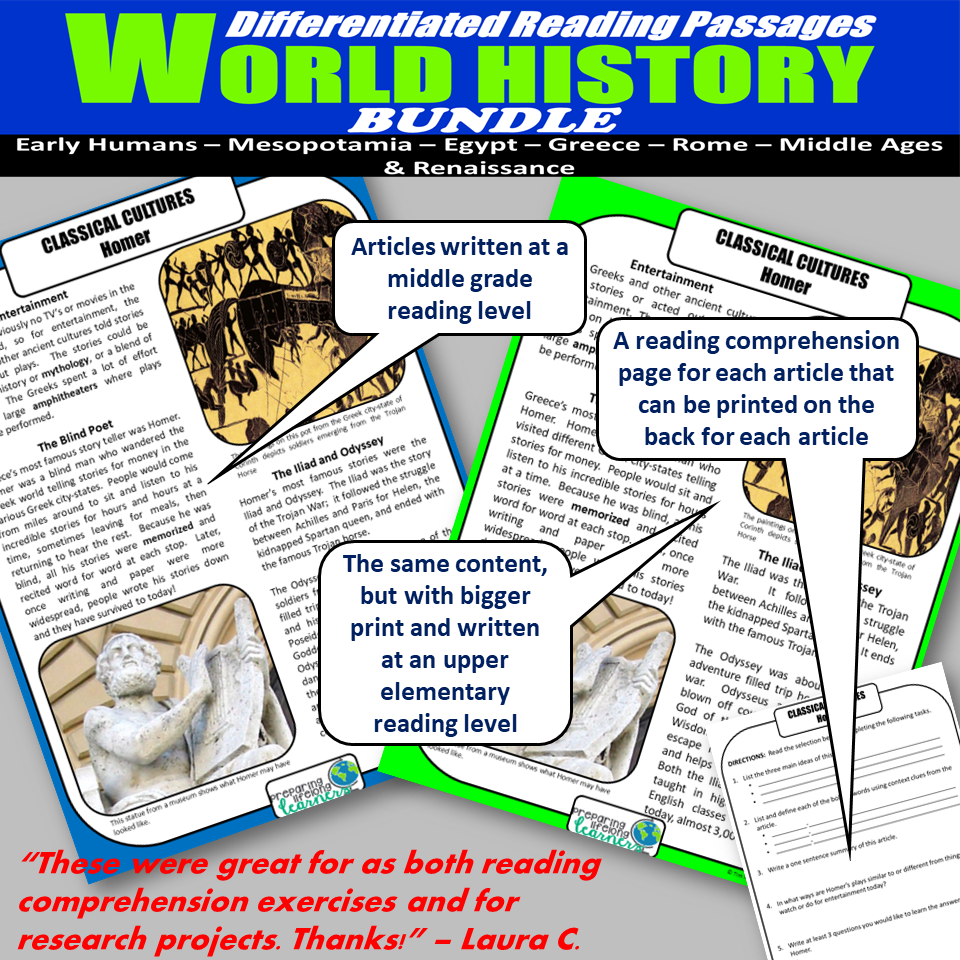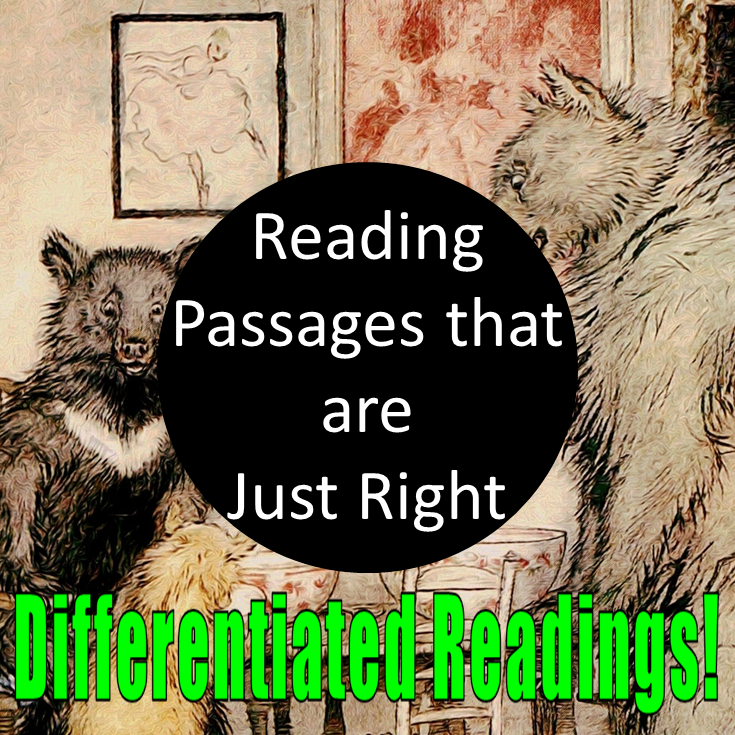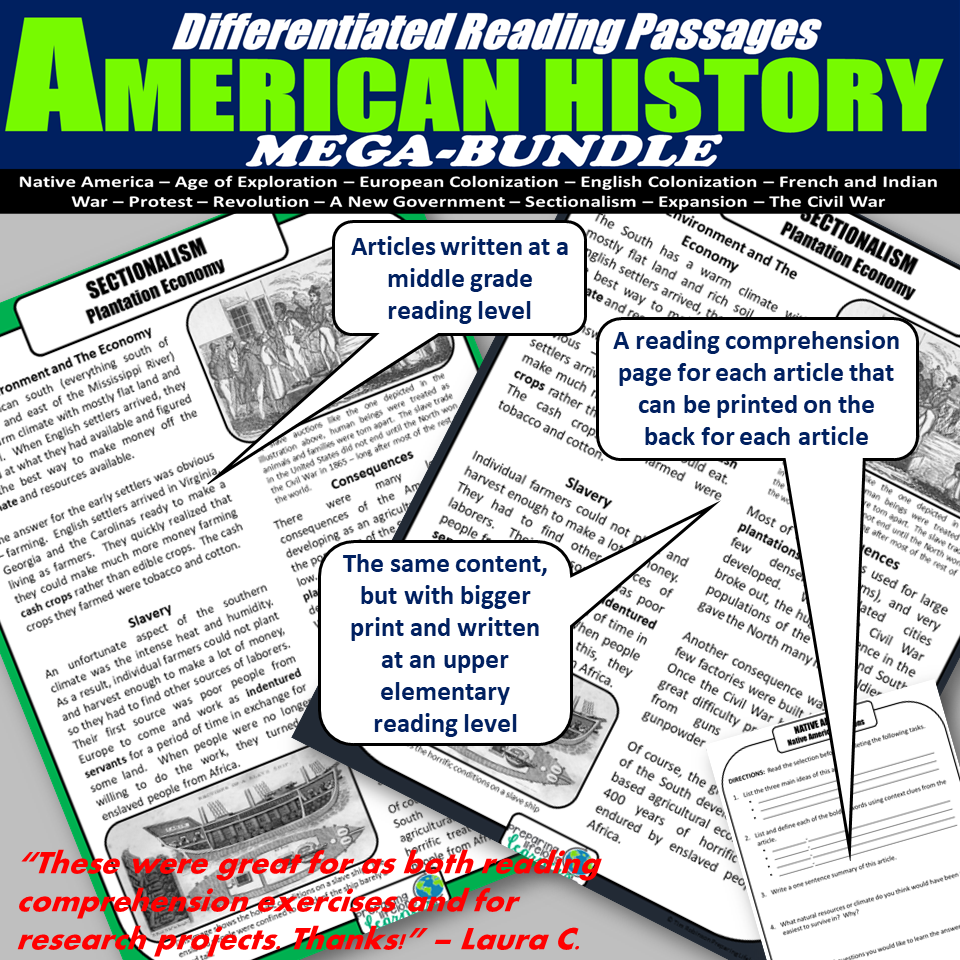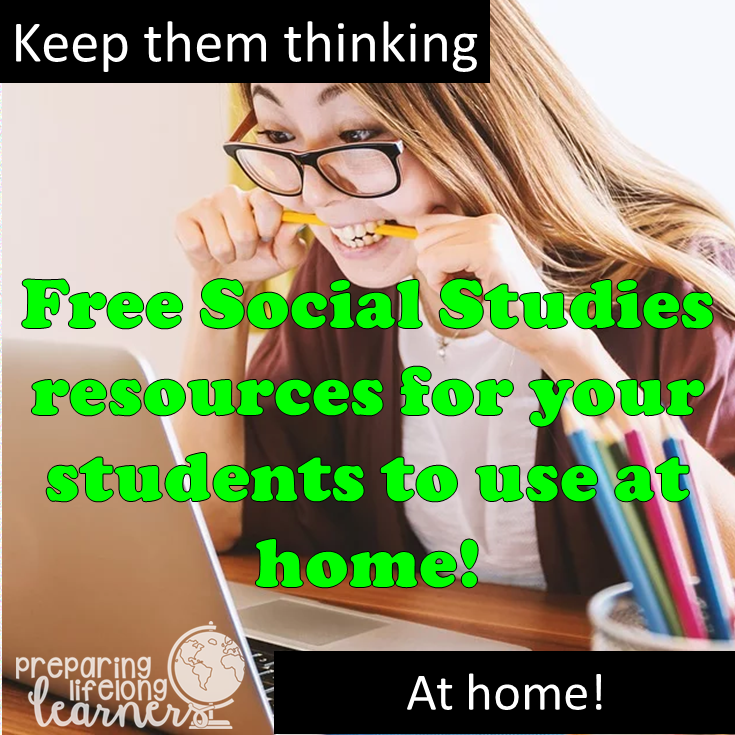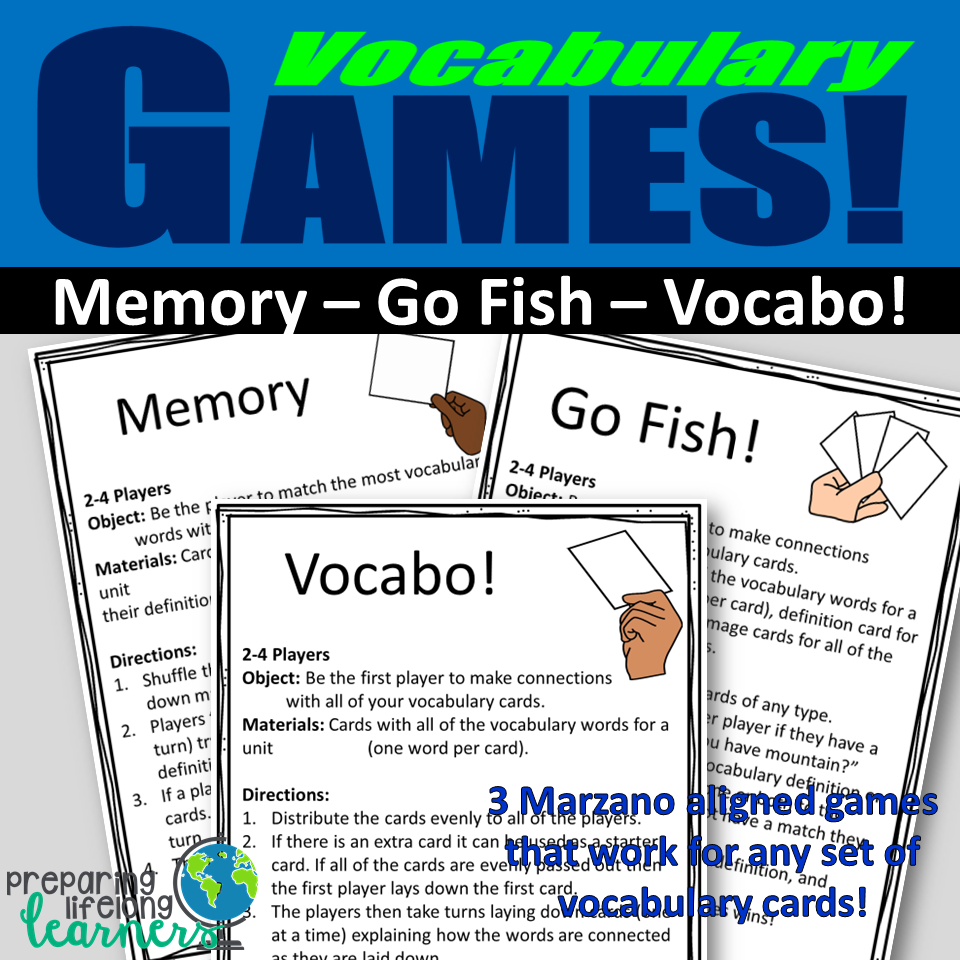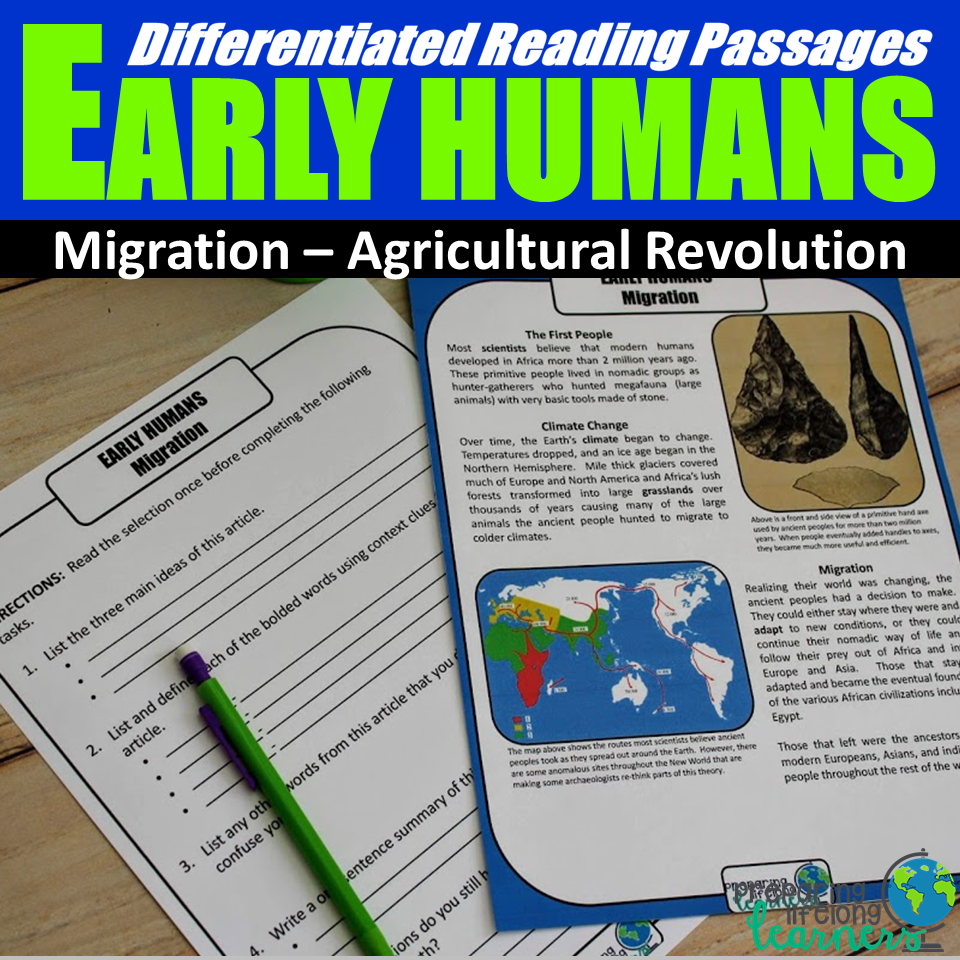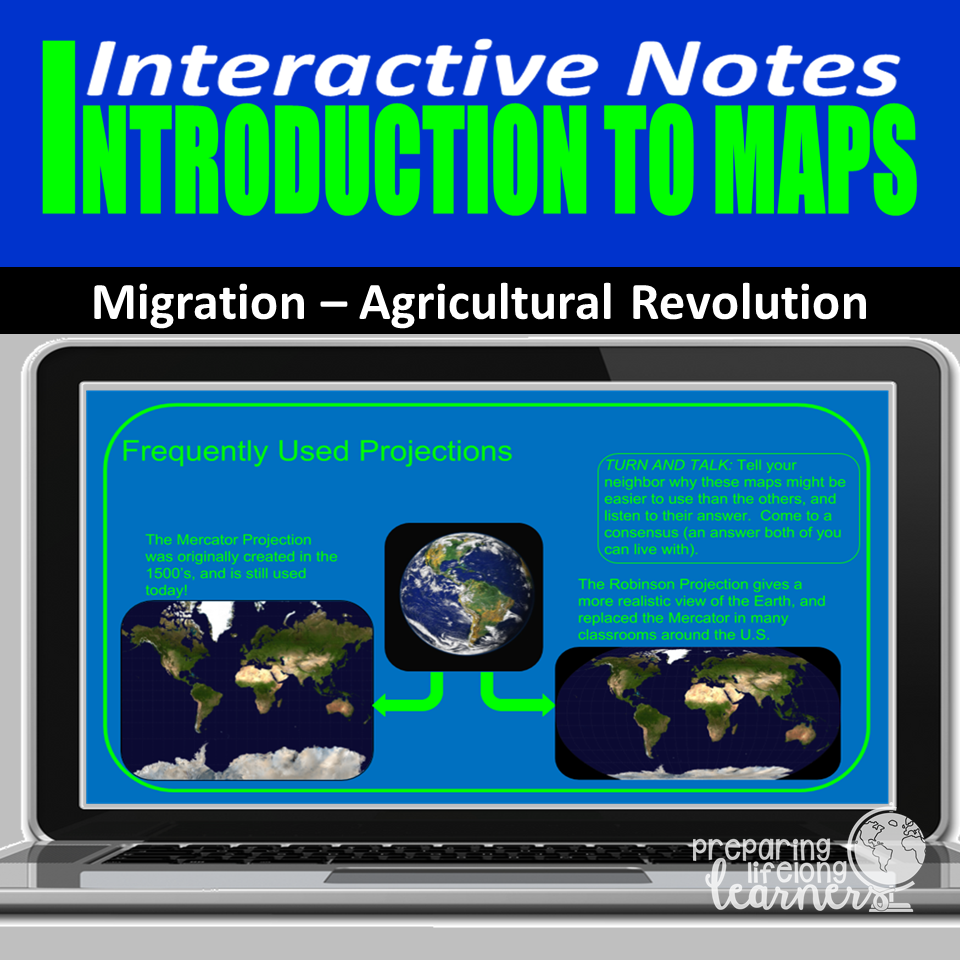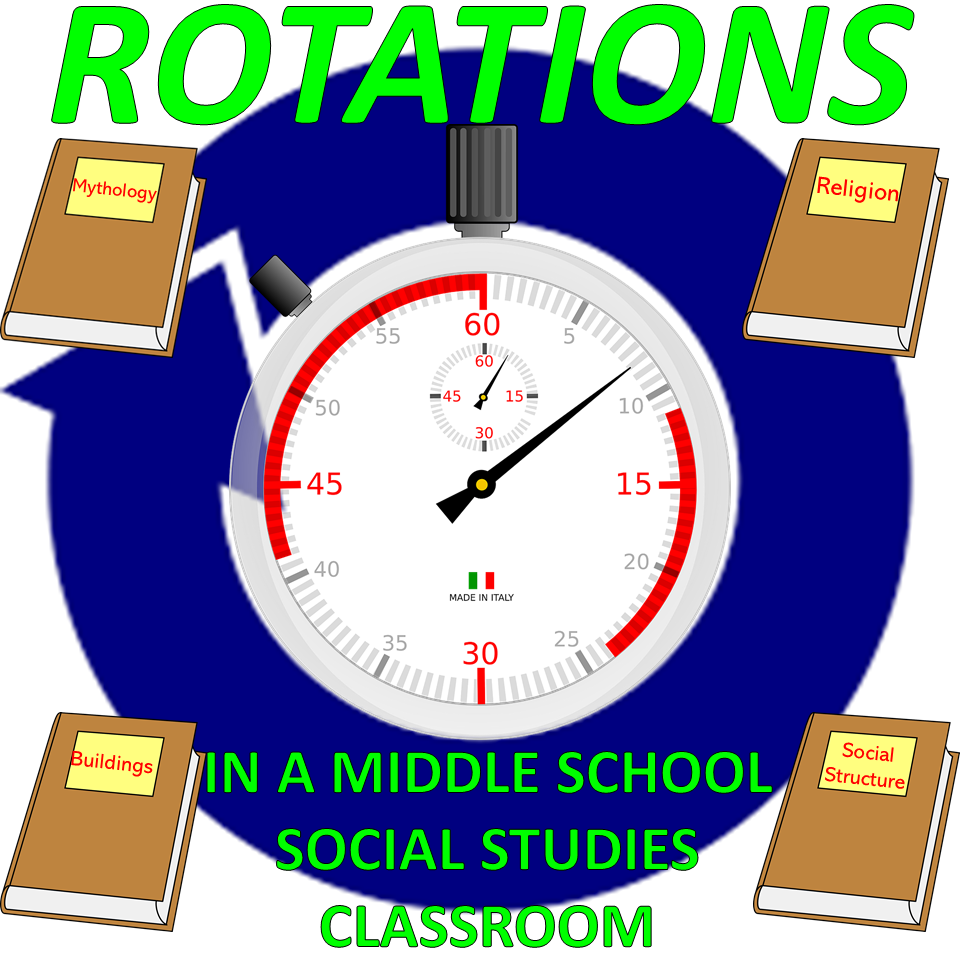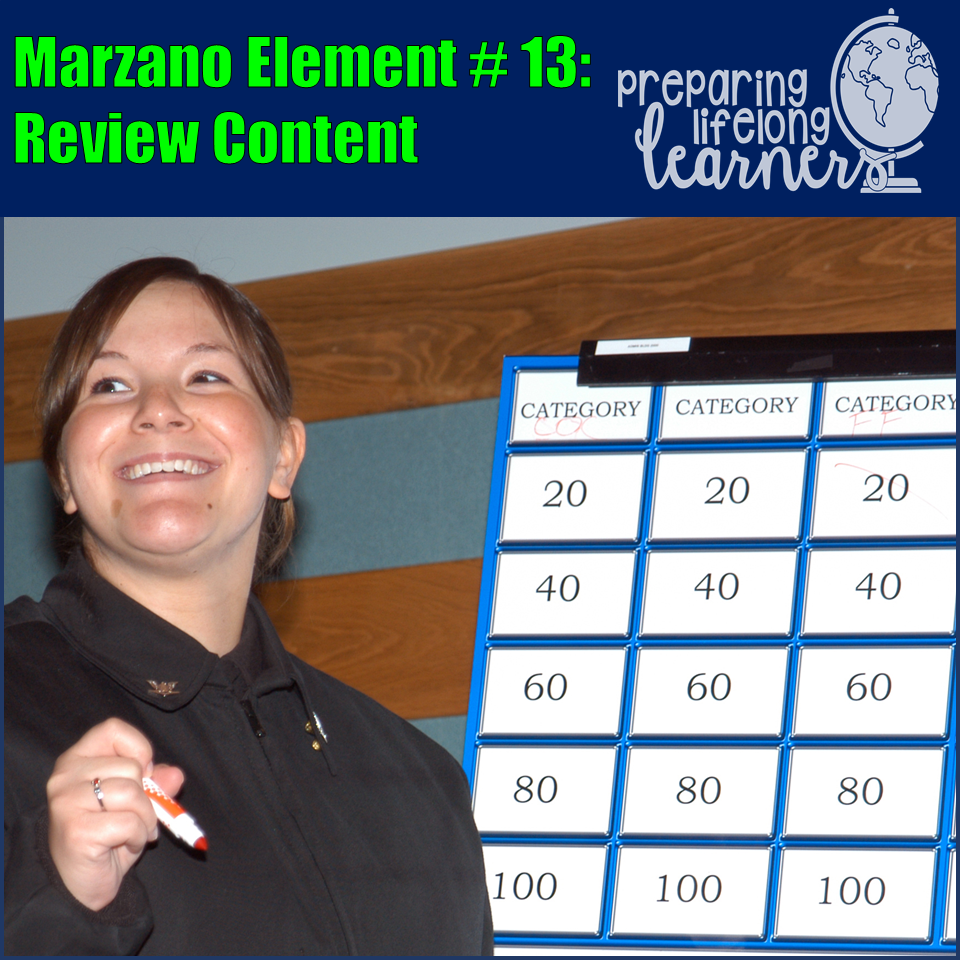|
In Goldilocks and the Three Bears, the main character breaks into a house and rummages around the owners' stuff only taking what's just right for her and leaving the rest. Our students can be like that sometimes. Often times, when they read they will skip words they don't know which leads to misunderstanding. If something is below their level, they might just skim it and also lose meaning. The trick is to find readings that are at their level, or, as Goldilocks would say, "just right." My differentiated readings address this issue. The same content is provided at two different reading levels - Upper Elementary and Middle School. These passages allow your at grade level students and below grade level students to all have access to the same content without the frustration of work that is too easy or too hard. All of my World History Differentiated Readings are bundled together, but are also available by individual culture/era. Each set covers 3 topics at 2 grade levels for 6 articles per set (36 articles total!). Below are the cultures/eras covered:
So, click the link below for my World History Differentiated Reading Bundle and don't forget to visit and follow my store for more great World History resources!
0 Comments
Finding reading activities that challenge all of your students is difficult (especially if it is something to be sent home that you cannot face-to-face help them with). For some, it's too easy, for others too hard. It's kind of like Goldilocks and the 3 Bears. The problem is that it is nearly impossible to find something that is just right for everyone. It would be much better to find materials that are just right for every one. I don't have that, but I do have something that takes a big step in that direction. My differentiated readings provide the same content at two different reading levels - Upper Elementary and Middle School. These passages provide students with critical content in a format they won't struggle with while teaching them critical skills associated with reading informational texts! All of my American History Differentiated Readings are bundled together, but are also available by individual event/era. Each set covers three topics at two reading levels for six articles per topic (33 articles total!) Below are the major events/eras covered:
So, click the link below for my American History Differentiated Readings Mega-Bundle and don't forget to visit and follow my store for more great American History products! One of the best professional development opportunities I ever had was getting to go to the National Council of Social Studies Teachers in Chicago last year. My favorite presentation was a fascinating book talk about the Spanish Flu epidemic of 1918. As I listened, I remember thinking, "I'm glad I never had to live through that." Well... I know a lot of us are scrambling to find things for our students to do while they are at home, so, this week I'd like to highlight my FREE resources. If they look good, please download them and share them with your students and their parents.
It was almost a Christmas miracle. It was two days before Winter Break, and you could hear a pin drop in my class! No, my students weren't watching a movie or doing a holiday word search or graphing lots of points that eventually draw a Christmas tree or Santa, we were learning about important cultural institutions of ancient China! Here are the steps:
Benefits of this activity:
I recently used this activity as part of an inquiry about ancient Roman technology, and used my Roman Military Equipment Centers Activity as the resources the students rotated and got information about. It worked great! So, if you are interested in a great interactive way to learn about ancient Rome's military, click the link below, and don't forget to visit and follow my store for more great Social Studies resources! Remember in Saved by the Bell (or practically any other school-based TV show or movie) how the teacher would be in the middle of teaching when the bell rings and all the students rush out while the teacher yells out their homework assignment? Or at the beginning of the class say something like, "Open to page 132 and...)? Well, those teachers are definitely NOT utilizing Dr. Marzano's 13th element. According to Dr. Marzano, it is vital to provide students with an opportunity to review earlier content at the beginning of a lesson and an opportunity to connect what they have learned in the current lesson with what came earlier. I try to begin or end most lessons with a visual timeline in front of class to accomplish this element. I stand in the front left of the room and say, "I'm standing in the Paleolithic. Who can tell me 3 facts about the lifestyle here?" Then I shuffle over a bit and repeat the process with the Neolithic and Mesopotamia and continue until we reach the time period we are currently studying. The process works even better with American History because there is even more continuity through time. Below are some things you (or and administrator) could look for to see if this element is being used in your classroom:
|
MEET TIMI'm an 18 year veteran teacher that loves teaching, coaching, writing, and my family.
Archives
May 2022
|

